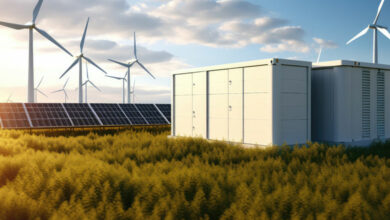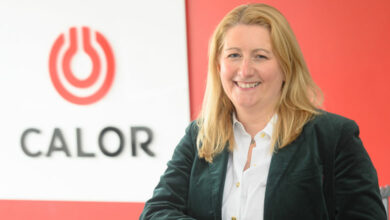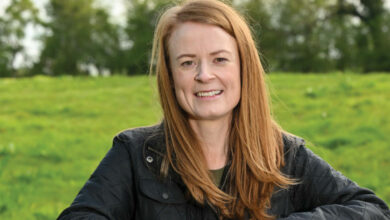Developing Europe’s gas infrastructure

Gas, in all its forms, will have a major role to play within a decarbonised Europe, according to Boyana Achovski, Secretary General of Gas Infrastructure Europe (GIE).
Achovski believes that while the development of hydrogen resources will be key to any switch towards a decarbonised Europe, the over-arching driver for the future of gas will be the need for Europe to best utilise the investment made in creating the gas distribution network that now exists across the continent.
Achovski points out that under the COP 21 Paris agreement, 195 countries agreed to limit global warming to well below 2°C, adding: “The European Union is responsible for 10 per cent of global greenhouse gas emissions, with energy responsible for 75 per cent of this European figure.
“It must also be factored in that demand for gas is still growing,” she states. “There is an obvious need for decarbonised energy. However, affordable decarbonisation cannot be achieved without using existing gas infrastructure.”
Commenting specifically on methane emissions, the greenhouse gas (GHG) which is most closely associated with the transmission of natural gas, Achovski says that the sector is doing its utmost to reduce the climate change footprint in this regard.
Highlighting that methane accounts for only 11 per cent of global GHG emissions, she says: “Within this overall figure, the gas distribution sector accounts for a very small proportion of the total emission values actually recorded.”
GIE is the European representative association for 70 members, currently operating in 26 member states and was established in 2005. The organisation represents the sole interest of the infrastructure industry within the gas sector under three categories of operation: transmission; storage; and liquid natural gas (LNG).
Achovski says: “GIE is committed to achieving EU climate change targets, having a clear focus on infrastructure, integration and innovation.
“Improved infrastructure will help deliver reliable, secure and an affordable energy supply across the EU. Such investments will also help to decarbonise energy.”
Achovski believes that a combination of LNG, storage and gas transmission constitutes a reliable energy system that could serve all of Europe. She also points out that gas, cross-border transmission capacity represents more than three times the capacity available from a combination of wind and solar power.
“Wind and solar are intermittent energy sources. Gas can be used to balance out the supply of electric coming on to Europe’s electricity grid,” she adds. “In addition, Europe’s expanding gas distribution network can be regarded as a valuable energy sump, to be used efficiently when required.”
Transport
Achovski also points to the tremendous potential of using gas within the transport system. Turning to the prospects for a combination of synthetic methane and hydrogen gas, she says that developments of this nature would help the EU achieve the complete decarbonisation of its energy sector.
“The technology to make this happen will be available in the coming years,” she asserts. “However, to ensure its potential is realised, full use must be made of the existing gas distribution network.”
Achovski highlights a 2019 Ecofys (Navigant) study, which confirms an annual €217 billion savings if 270 billion cubic meters of renewable methane and hydrogen are used in a smart combination with renewable electricity to achieve a zero carbon emissions’ status for the EU’s energy sector, adding: “This cost saving relates to a comparitive scenario, which would see gas taken out of the equation altogether in reaching a zero carbon status.
“Similar studies carried out by Pöyry, Ecofys in 2018 and Eurogas confirm respective annual savings of €98 billion; €138 billion and €335 billion, respectively.”
Achovski says that the further integration of the EU gas industry would bring many benefits. These include the coupling and development of renewable energy storage.
“The Navigant 2019 Gas for Climate study shows that the EU’s energy system can become fully renewable. Battery seasonal storage is unrealistic, even at strongly reduced costs.
“Full decarbonisation of high temperature industrial heat requires gas. It should also be possible to sustainably scale-up renewable gas at strongly reduced production costs.
“Blue hydrogen, from natural gas, with carbon capture and storage can be a scalable and cost-effective option. The potential exists for a combination of hydrogen and biomethane to meet 80 per cent of Europe’s gas requirements.”
However, Achovski is clear about the importance of sustainable production of green hydrogen. Most likely, this will be produced through the electrolysis of water. In the form of hydrogen, surplus and trapped renewable energy can be stored, distributed and made accessible to growing zero emission markets.
In addition, hydrogen has a very high energy to weight density and only emits water. It can be distributed compressed, liquefied or through a pipeline. If transported on land, the gas itself can be used to power the vehicle fleets carrying it.
Achovski indicates that Gas Networks Ireland (GNI) would play a key role in helping Ireland meet its sustainable energy requirements over the coming years. She says that the company owns and operates one of the most strategically important assets in the country. It will also help Ireland attain a number of core national objectives across the areas of agriculture, manufacturing and transport.
On the subject of innovation, the GIE Secretary General believes that gas infrastructure can accommodate renewable and decarbonised gases, adding that gas technology can also facilitate increased energy efficiency.
She says: “There are no physical bottlenecks to the volumes of hydrogen which the existing gas distribution network can accommodate. The maximum hydrogen inclusion rate in Germany currently stands at 10 per cent. This is about to rise to 25 per cent.
“The reality is that hydrogen transport within the gas grid amounts to a new, virtual energy grid throughout Europe. A hydrogen pipeline can carry five times the amount of energy that can be facilitated by an electrical cable.”
Summing up, Achovski says that gas must be considered in both the present and future contexts, from an energy perspective: “In the here and now, gas is socially acceptable. It is a reliable and affordable energy supply source and performs an electricity grid balancing role in tandem with wind, solar and other renewables.
“Gas can also help deliver fast emission reductions, particularly when compared with solid fossil fuel sources.
“Looking to the future, gas can deliver greater energy efficiency, if suitably coupled. It can deliver increased renewable storage capacity across Europe and can also deliver very large cost savings, when compared to the operation of electricity networks. Also, the existing grid infrastructure will help deliver a smooth transition form natural gas to renewable and decarbonised volatiles.”





